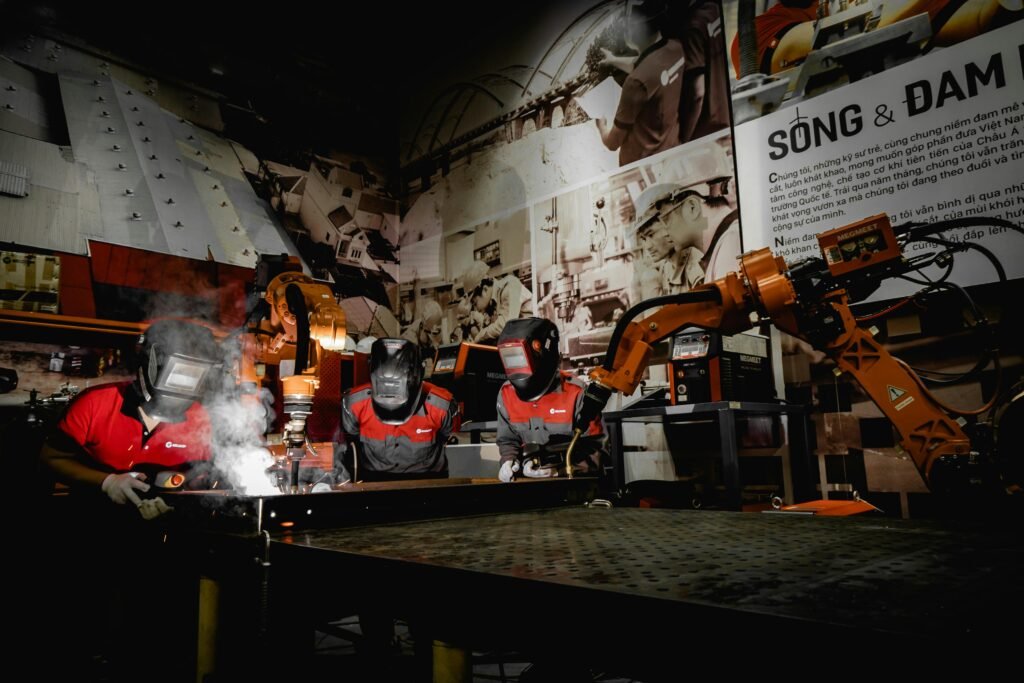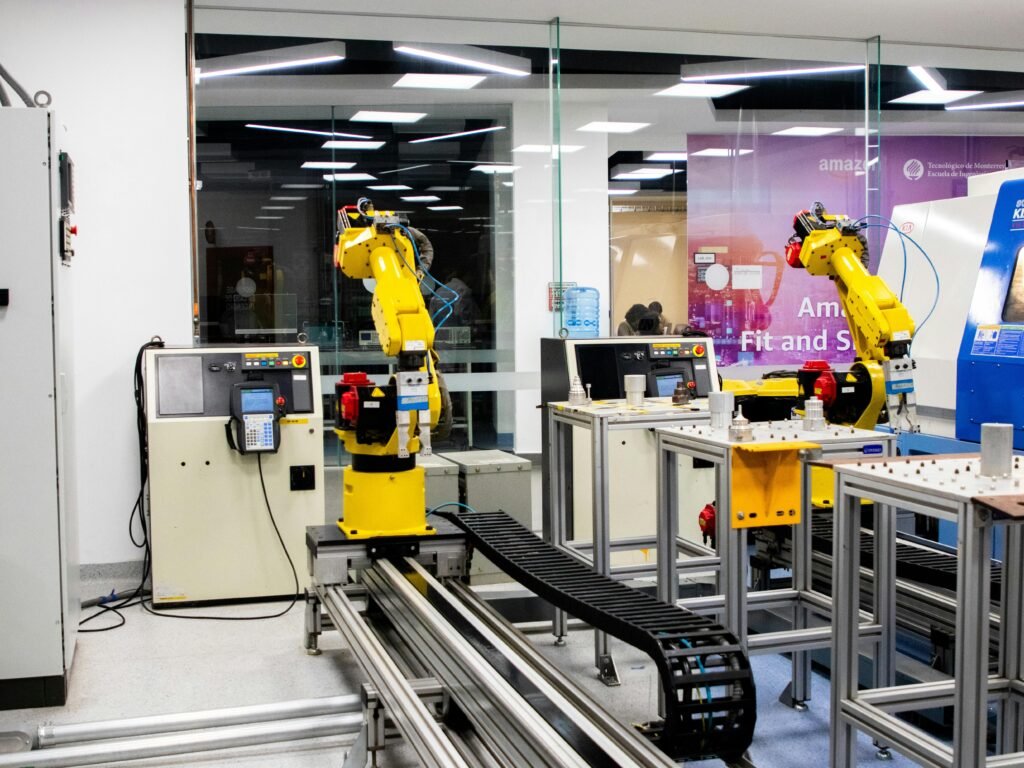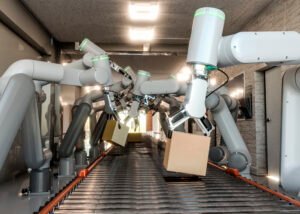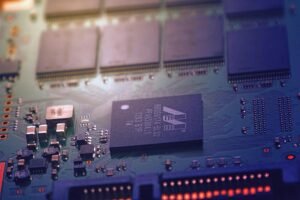In today’s competitive manufacturing landscape, automation is no longer optional—it’s essential for businesses that want to remain competitive. At the heart of industrial automation sits the industrial robot arm, a versatile tool that can transform productivity, quality, and operational efficiency. However, selecting the right industrial robot arm requires careful consideration of multiple technical and business factors.
With hundreds of models available from dozens of manufacturers, finding the perfect match for your specific application can be challenging. This comprehensive guide will walk you through the critical decision-making process to ensure you invest in the right automation solution for your unique needs.
Why Choosing the Right Robot Arm Matters
The selection of an industrial robot isn’t just a technical decision—it’s a strategic business investment that can dramatically impact your operation’s success. Proper selection leads to:



Significant Boost in Productivity and Precision
Well-matched robot arms can work continuously with consistent quality, often increasing throughput by 30-50% compared to manual operations. A study by the Boston Consulting Group found that optimally deployed robots can reduce manufacturing costs by up to 20% while improving product quality by eliminating human error.
However, these benefits only materialize when the robot’s capabilities align properly with your application requirements. A robot with insufficient payload capacity or reach will create bottlenecks, while oversized, over-featured robots represent wasted capital that could be allocated elsewhere.
Long-term ROI from Automation
Industrial robots typically operate for 10-15 years with proper maintenance, making the initial selection decision particularly consequential. The right robot arm continues delivering value long after its initial purchase price has been recouped, while a poor match may require premature replacement or limit your operational flexibility.
Common Selection Mistakes to Avoid
Many businesses make critical errors when choosing robot arms:
- Under-specifying capacity needs: Failing to account for future growth or varied production requirements
- Overlooking integration complexity: Not considering how the robot will interact with existing systems and staff
- Focusing solely on purchase price: Ignoring total cost of ownership, including maintenance, programming, and operation
By understanding the key selection factors before you buy, you’ll avoid these costly mistakes and maximize your automation investment.
Key Factors to Consider When Choosing a Robot Arm
1. Payload Capacity
Payload capacity represents the maximum weight a robot arm can manipulate, including both the part being handled and any end-of-arm tooling (EOAT) like grippers or welding guns.
How to Determine Your Payload Requirements
Always calculate your payload needs by adding:
- Weight of the heaviest part you’ll handle
- Weight of all end-effectors and tooling
- A safety margin (typically 15-20%)
For example, if your heaviest part is 10kg and your gripper weighs 3kg, you’ll need a minimum payload capacity of 15.6kg (13kg × 1.2 safety factor).
Common Payload Categories
Remember that payload capacity decreases as the arm extends to its maximum reach, so verify the robot’s payload curve specifications carefully.
2. Reach and Workspace
The robot’s reach determines the size of its operable workspace and directly impacts its utility in your specific layout.
Calculating Required Reach
To determine necessary reach:
- Measure the furthest distance the robot will need to extend in your application
- Add a buffer for flexibility (typically 10-15%)
- Consider not just horizontal reach but vertical requirements too
Different applications have dramatically different reach needs. Assembly operations often require a compact, precise workspace, while palletizing might demand extensive vertical and horizontal reach to build tall stacks across wide pallet arrays.
Workspace Optimization Strategies
- Strategic robot placement: Position the robot to minimize required reach
- Work cell design: Bring components within optimal reach range
- Supplemental movement: Consider track-mounted robots for extended linear movement
The ideal robot maximizes workspace utilization while maintaining the required payload capacity throughout its range of motion.
3. Degrees of Freedom (DOF)
Degrees of freedom refer to the number of independent movements or axes a robot arm possesses, determining its flexibility and ability to navigate complex spaces.
Understanding Axis Configuration Options
- 4-Axis Robots: Suitable for simple pick-and-place operations with vertical approach paths
- 6-Axis Robots: The industry standard, offering full spatial movement plus wrist articulation
- 7+ Axis Robots: Provide redundant movement capabilities, ideal for navigating complex obstacles or tight spaces
Your application’s complexity determines the necessary degrees of freedom. For example, straight-line insertion tasks might only require 4 axes, while complex welding paths in tight spaces would demand 6 or 7 axes to achieve the necessary torch angles while avoiding obstacles.
4. Speed and Precision
The balance between speed and precision is critical to operational efficiency.
Cycle Time Considerations
Robotic cycle times directly impact productivity. When evaluating robot arms, look for:
- Maximum joint speeds: How quickly each axis can rotate
- Maximum TCP (Tool Center Point) velocity: Linear movement speed of the end effector
- Acceleration/deceleration rates: How quickly the robot can start and stop
High-speed packaging applications might prioritize cycle times of less than 0.5 seconds, while precision assembly might accept slower movement for improved accuracy.
Understanding Accuracy vs. Repeatability
These terms are often confused but represent distinct specifications:
- Accuracy: How close the robot can get to a programmed position (typically ±0.1mm to ±1.0mm)
- Repeatability: How consistently the robot returns to the same position (typically ±0.02mm to ±0.1mm)
For most industrial applications, repeatability is more critical than absolute accuracy, as robots are typically taught positions rather than programmed by coordinates. However, applications involving offline programming or CAD-based instruction will require high accuracy as well.
5. Integration and Compatibility
Even the most capable robot is only valuable if it integrates smoothly with your existing systems.
Controller Compatibility
Modern robot controllers should offer:
- Communication protocols: EtherNet/IP, PROFINET, DeviceNet, etc.
- PLC integration: Allen-Bradley, Siemens, Mitsubishi, etc.
- Vision system compatibility: Major providers like Cognex, Keyence, etc.
Programming Options
Different programming interfaces suit different skill levels and application requirements:
- Traditional coding: Powerful but requires specialized knowledge
- Teach pendants: Intuitive interfaces for direct programming
- Offline simulation software: For complex planning without production interruption
- Graphical interfaces: Increasingly common for user-friendly programming
For operations with frequent changeovers or small batch sizes, intuitive programming becomes particularly important.
6. Brand Reliability and Support
The manufacturer behind your robot arm can be as important as the technical specifications.
Leading Industrial Robot Brands
- ABB: Known for advanced motion control and robust reliability
- FANUC: Highly regarded for longevity and comprehensive support network
- KUKA: Popular for exceptional programming flexibility and precision
- Yaskawa Motoman: Recognized for durability and welding applications
- Universal Robots: Pioneered the collaborative robot category
Support Considerations
When evaluating brands, consider:
- Local service technician availability
- Spare parts supply chain and warehousing
- Training resources and certification programs
- Warranty terms and extended service options
A slightly more expensive robot with excellent local support often proves more cost-effective than a cheaper option with limited assistance.
Industrial Applications and Matching Robot Types
Material Handling
Material handling encompasses a wide range of tasks from simple pick-and-place to complex bin picking and logistics applications.
Key Requirements:
- Variable payload capacities (typically 5-150kg)
- Reach appropriate for cell layout (600-2500mm)
- Speed optimization for cycle time improvement
- Gripper versatility for different parts
Recommended Robot Types:
- Articulated 6-axis robots: For flexible material handling with complex approach angles
- SCARA robots: For high-speed pick-and-place in a single plane
- Delta robots: For extremely high-speed sorting and packaging of light items
Welding
Robotic welding demands precision torch control, path accuracy, and often specialized programming capabilities.
Key Requirements of industrial robot arms:
- Medium payload capacity (typically 6-20kg for the welding torch)
- Excellent repeatability for consistent weld quality
- Special wrist configurations for torch manipulation
- Specialized welding packages from the manufacturer
Recommended Robot Types:
- Articulated 6-axis welding-optimized arms: Found in several manufacturers’ specialized welding series
- Extended-reach variants: For large welding applications like structural components
Assembly
Automated assembly operations typically require precise movement, flexible programming, and adaptable end effectors.
Key Requirements:
- Excellent repeatability (±0.02-0.05mm)
- Often lower payload requirements (3-10kg)
- Force control for delicate insertion operations
- Vision integration capabilities
Recommended Robot Types:
- Precision small articulated robots: For general assembly tasks
- Collaborative robots (cobots): For operations where humans and robots share workspace
- SCARA robots: For electronics and other planar assembly applications
Machine Tending
Industrial robot arm for machine tending load/unload CNC machines, injection molders, and other equipment.
Key Requirements:
- Medium payload capacity (typically 10-50kg)
- Reach sufficient to access machine workspace
- Robustness in tough industrial environments
- Safety features for operator interaction
Recommended Robot Types:
- Medium articulated robots: For general machine tending
- Collaborative robots: For easy redeployment between multiple machines
- Floor-mounted or inverted mounting options: For space optimization
New vs. Used Industrial Robots – What Should You Choose?
The decision between new and used robots significantly impacts both initial investment and long-term operations.
New Robot Advantages
- Latest technology and features
- Full manufacturer warranty (typically 12-24 months)
- Complete documentation and support
- No wear concerns or unknown history
- Often improved energy efficiency
Used Robot Advantages
- Significantly lower acquisition cost (typically 40-60% of new price)
- Immediate availability compared to potential lead times for new units
- Proven reliability for well-maintained units
- Potential for certified refurbishment with limited warranty
- Environmentally responsible through equipment reuse
Making the Right Choice for Your Business
Consider these factors when deciding between new and used robots:
- Budget constraints: Used robots offer a lower capital expenditure entry point
- Application criticality: Mission-critical applications might justify new equipment
- Timeline: Used robots are often available immediately without manufacturing lead times
- Expected lifespan: Consider how long you need the robot to operate
- Technical support needs: Newer robots typically have better support options
Robotbids offers certified used robots from verified sellers, providing transparency about condition, operational history, and remaining service life. Each listing includes detailed specifications, allowing for apples-to-apples comparison with new alternatives.
How Robotbids Makes It Easy to Find the Right Robot Arm
Navigating the industrial robot marketplace can be challenging, especially for businesses new to automation. Robotbids simplifies this process with a specialized platform designed specifically for robot transactions.
Powerful Search by Technical Specifications
Robotbids allows you to filter available robots by the critical parameters we’ve discussed:
- Payload capacity ranges
- Reach requirements
- Brand preferences
- Application suitability
- Controller types
- Condition (new, used, refurbished)
Verified Sellers and Transparent Pricing
Unlike general industrial equipment platforms, Robotbids focuses exclusively on robotics, with:
- Seller verification process
- Standardized condition reporting
- Transparent pricing without hidden fees
- Direct communication with sellers
Expert Support Throughout the Process
The Robotbids platform provides:
- Technical documentation access
- Ability to ask detailed questions before purchase
- Side-by-side comparison tools
- Simple, secure transaction processing with just a 12.5% flat seller fee
This specialized approach eliminates the uncertainty often associated with industrial equipment purchases.
Final Checklist Before You Buy
Before finalizing your robot arm selection, confirm that you’ve considered all critical factors:
Technical Requirements Assessment
- Application fully defined with payload, reach, and precision requirements
- Robot specifications exceed requirements with appropriate safety margin
- End-of-arm tooling compatibility confirmed
- Controller and communication protocols match existing systems
- Power requirements (electrical, pneumatic) within facility capabilities
Business Considerations
- Total cost of ownership calculated (purchase, installation, programming, maintenance)
- Return on investment timeline established
- Staff training requirements identified
- Implementation timeline aligned with production schedule
- Growth and flexibility needs anticipated
Support Infrastructure
- Local service and parts availability confirmed
- Warranty terms understood
- Maintenance schedule and requirements documented
- Training resources secured
- Safety compliance verified
Frequently Asked Questions (FAQ)
What is the best industrial robot arm for small businesses?
Small businesses typically benefit from flexible, easy-to-program robots with lower initial costs. Collaborative robot series from Universal Robots, ABB’s YuMi series, and FANUC’s CR series offer excellent entry points with intuitive programming and versatile applications. Used robots from major manufacturers available on Robotbids can also provide enterprise-grade capabilities at small business prices.
How long do industrial robot arms last?
With proper maintenance, industrial robot arms typically provide 10-15 years of productive service. Many premium brand robots operating in clean environments can exceed 80,000 hours of operation. Used robots available on Robotbids often have substantial operational life remaining, especially those that have undergone certified refurbishment.
Can I integrate a robot arm into my current production line?
Yes, modern industrial robots are designed for integration into existing production environments. The key factors for successful integration include selecting appropriate communication protocols, ensuring physical space compatibility, and proper programming. Many robots on Robotbids come with integration packages and can be retrofit into existing production cells.
What’s the ROI timeframe for an industrial robot?
Return on investment varies significantly based on application, but typically ranges from 12-24 months for high-utilization applications. Factors affecting ROI include labor savings, quality improvements, reduced waste, and increased throughput. Used robots purchased through Robotbids can accelerate ROI timelines by reducing initial capital expenditure while maintaining productivity benefits.
Conclusion
Selecting the right industrial robot arm represents a critical business decision that impacts operational efficiency, product quality, and competitive advantage. By carefully evaluating payload capacity, reach, degrees of freedom, speed, precision, and integration requirements, you can identify the optimal automation solution for your specific needs.
Whether you choose a new robot with the latest technology or a quality used system that delivers excellent value, ensuring proper alignment between your application requirements and the robot’s capabilities is the key to automation success.
Robotbids simplifies this selection process by providing a transparent marketplace specifically designed for industrial robotics. With verified sellers, detailed technical specifications, and expert support, finding the right robot arm for your business has never been easier.👉 Ready to upgrade your automation? Browse verified robot arms on Robotbids now.








